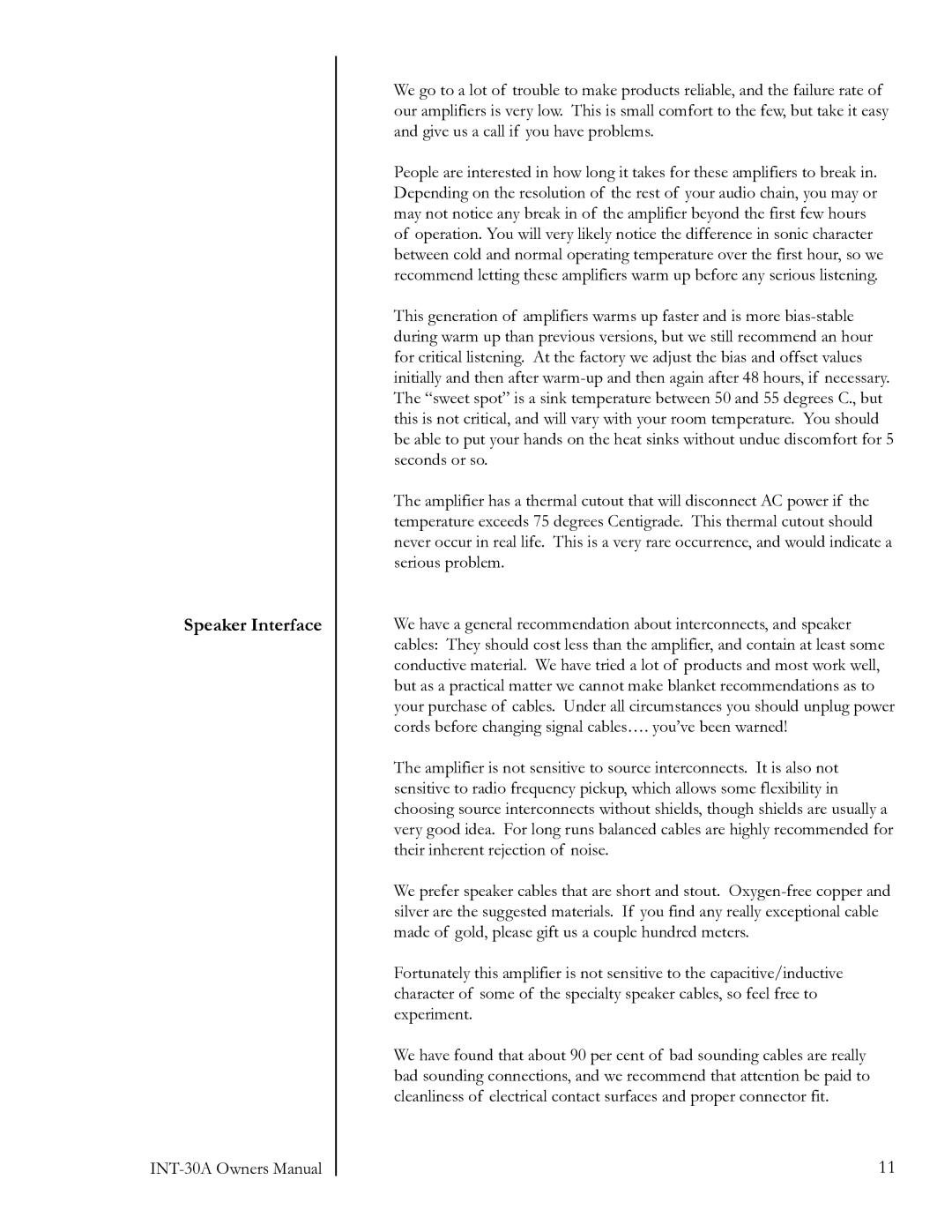1INT-30A specifications
Pass Labs is renowned for its high-quality audio equipment, and the Pass Labs 1INT-30A integrated amplifier exemplifies the company's commitment to excellence. This amplifier is designed for audiophiles seeking a blend of superior sound quality, innovative technology, and robust build.At the heart of the 1INT-30A is its powerful Class A amplifier topology, which is one of the distinguishing features of Pass Labs products. Class A operation is known for its linearity and minimal distortion, providing a warm and natural sound. The 1INT-30A is capable of delivering 30 watts per channel into 8 ohms, which might seem modest compared to high-powered amplifiers, but the purity of the sound is where it shines. This amplifier can also drive speakers with lower impedances effectively, making it versatile for various audio setups.
One of the standout technologies featured in the 1INT-30A is its Fully Balanced Differential Circuitry. This design helps to minimize noise and interference, ensuring that the audio signal remains clear and accurate from input to output. This attention to detail in the circuit design is instrumental in delivering the pristine sound quality that Pass Labs is known for.
In addition, the 1INT-30A incorporates a high-quality volume control that ensures precise adjustments. The volume is not only easy to operate but also designed to maintain sonic integrity across its range, allowing users to enjoy dynamic performances with minimal compromise.
Another important aspect of the 1INT-30A is its exploitation of minimalist aesthetics combined with sturdy craftsmanship. The amplifier is housed in a beautifully crafted chassis with a front panel that is both elegant and user-friendly. The build quality reflects the high standard typical of Pass Labs, with an emphasis on longevity and reliability.
Connectivity options on the 1INT-30A include multiple analog inputs, allowing for integration with various audio sources like CD players and turntables, which makes it highly adaptable for different audio setups. The inclusion of a high-quality headphone output also adds to its versatility, catering to listeners who prefer private listening experiences.
In summary, the Pass Labs 1INT-30A represents a harmonization of innovative technology and superior sound engineering. From its powerful Class A output to its Fully Balanced Differential Circuitry, every aspect of the amplifier contributes to an exceptional listening experience. With elegant design and meticulous craftsmanship, the 1INT-30A is a testament to Pass Labs' dedication to producing high-fidelity audio equipment that satisfies the exacting demands of audiophiles.
